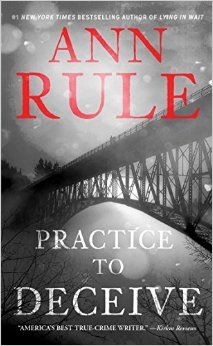Law and Crime
Behind The Scenes With The 'Queen of True Crime'
Author Ann Rule discusses using forensic science in her fact-based crime books
Posted October 22, 2014
Part 1 in a two-part series on famous author Ann Rule’s use of forensic science in her writing.

Part 1 in a two-part series on famous author Ann Rule’s use of forensic science in her writing.
Early in author Ann Rule’s writing career covering crime, she realized she needed to know more about what police actually do. So she took forensics courses. And then she set about building a decades’-long vocation landing tough-to-get interviews and gaining vital background that’s prompted publications such as Kirkus Reviews to label her the “reigning true-crime queen.”
I sat down with Rule and asked her how she goes about getting those dicey facts and details she's known for that are so vital to her fact-based crime books.
A good chunk of her research comes down to one word: Forensics.
“I find forensic science fascinating,” Rule said from her home on the shores of Puget Sound in Washington State. Early on in her career, she went back to school to get an associate arts degree in police science.
“I learned all about forensic science, so when I approach detectives and cops, I can speak their language,” she told me. “I was so glad I went back to school, because I did understand forensics, and then DNA came along and I took a class in that. I never liked science earlier in school, but when it was meaningful to me, I was fascinated.”

Defined as the use of scientific knowledge and methods in solving crimes, forensics were crucial when it came to the main character in Rule’s latest book, Practice to Deceive, set on Whidbey Island north of Seattle, Washington. The island, on a remote road, was where the body of Russel Douglas was discovered in his SUV on a chilly winter day and became the focus of Rule’s book.
That single but vital piece of evidence ultimately solved the crime. It was a missing link provided by none other than James Huden, the convicted killer.
“Police were frustrated for a long time because they didn’t have forensic evidence,” Rule noted. That fact changed after a former police officer moved into a house the killer had once lived in. He discovered a slug in the back yard and notified authorities. Investigators removed it and it turned out to be a match for the gun police said was used to kill Douglas.
“You can match a gun by the twists and turns on the bullet,” Rule said, “because they leave a distinctive mark.”
Chasing after cases like the Whidbey Island murder has been her life’s work, which began when Rule volunteered a couple nights a week answering hotline phone calls with a fellow volunteer who turned out to be a wanted serial killer.
“I was a volunteer at the crisis clinic in Seattle and my partner every Sunday and Tuesday night was a very nice young man named Theodore Bundy. He would walk me to my car when I left the crisis clinic at two in the morning. He’d say, ‘Be careful, I don’t want anything to happen to you.’ He knew how dangerous it was.”
Rule was shocked to later learn that Ted Bundy was anything but nice. “I couldn’t believe when he turned out to be the killer everyone was looking for,” she said. Ultimately, “I had a contract to write a book about the evil Ted. I had no idea I’d one day be writing about my friend.”
Her book was titled The Stranger Beside Me, and it became a mega bestseller upon its 1994 release and put Rule on the national stage, laying the groundwork for more books from her in the fact-crime genre.
“Ted and I thought we were good friends,” Rule said. “I wasn’t afraid of him. In retrospect, I didn’t need to be afraid of him because serial killers very rarely hurt the people they know. Ted once said—not to me but to a King County detective-—he said, ‘After I talk to a woman for twenty minutes, she wouldn’t be the perfect viciim, because I’d be emotionally attached to her. They have to be strangers.’”
“I sure wasn’t Ted Bundy’s type,” Rule added. “I was a plumpish woman of thirty-five with a whole lot of kids. He liked young women in their twenties with long hair.”
Her daughter, Leslie Rule, once met Bundy and had an immediate feeling about him—and not a good one, Rule said. “One time my daughter came down to the crisis clinic. She was about sixteen. She and two of her friends had been to a concert and I didn’t want them to take a bus home, so I brought them to the crisis clinic, not knowing at the time, with the most dangerous man in town. Leslie has a great seventh sense. The other girls giggled and laughed and thought he was so handsome. Leslie thought there was something wrong with him.”
She was right. Bundy at the time was wanted in several states for multiple murders of young women. After legal wranglings and several convictions, in 1989 Bundy was put to death in an electric chair.
Since Ann Rule's book about Bundy, she hasn’t slowed down. Her next book—one of more than two dozen—is Lying in Wait, a collection of true-crime stories due for release Nov. 24.
Watch for Part 2 in this two-part series about author Ann Rule’s use of forensic science as Rule talks about the Green River Killer and other cases.




